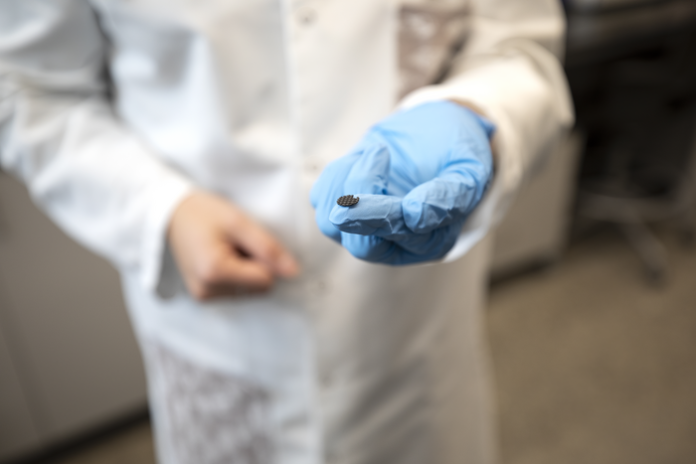A couple of years ago, we talked about the NASA Mars Dune Alpha project that aims to 3D print future habitats on Mars. So far, the project involves Youngstown State University (YSU), 3D printer manufacturer Formlabs, construction 3D printing company ICON as well as the University of Texas at El Paso that received a $615,000 grant as part of the $2.5 million project.
With this grant, the research team from the university will explore the use of 3D printing processes for the manufacturing of rechargeable batteries using lunar and Martian regolith, which is the top layer of materials that covers the surface of the moon and Mars.
The long-term goal of the project is to maximize the sustainability of astronauts’ future lunar and Martian missions by reducing payload weight and dead volume. The utilization of local resources widely available on the moon or Mars is crucial to develop infrastructure such as habitation modules, power generation and energy storage facilities.
“UTEP is a seminal partner in this NASA-led project with our long and deep heritage in additive manufacturing,” said Eric MacDonald, Ph.D., professor of aerospace and mechanical engineering and associate dean in the UTEP College of Engineering. “UTEP’s reputation in 3D printing, material science and our state-of-the-art facilities were important factors in convincing our NASA partners to pursue this potentially transformative research – for space exploration but for terrestrial applications of batteries as well.”
ACS Energy Letters, a peer-reviewed journal from the American Chemical Society, published an article titled “What Would Battery Manufacturing on the Moon and Mars Look Like?” in January, detailing the progress UTEP and NASA researchers have already made on this project.
The published work highlights two types of 3D-printing processes – material extrusion (ME) and vat photopolymerization (VPP) – to produce shape-conformable batteries on the moon and Mars.
Shape-conformable batteries are complex 3D battery designs that outperform existing commercial batteries because of their ability to fill the dimensions of objects. Such tailored batteries are especially well-suited for applications in small spacecraft, portable power devices, robots, and large-scale power systems for moon and Mars habitat missions.
Another potential outcome of this work is the development of shape-conformable batteries that can be used on Earth. These batteries could be embedded in 3D-printed concrete walls and connected to solar power generation to create compact, self-sustaining homes for disaster response and in developing countries.
While commercial lithium-ion batteries can be found in most of today’s applications, manufacturing lithium-ion batteries from lunar and Martian soil is not a viable option since lithium is scarcely available on the moon. For this project, the UTEP research team is currently focusing their work on sodium-ion battery chemistry, based on the greater abundance of sodium.
“Additive manufacturing appears as a unique approach to manufacture shape-conformable batteries to support human operations in space and on the surface of the moon or Mars, where cargo resupply is not as readily available”, said Alexis Maurel, Ph.D., French Fulbright Scholar in the UTEP Department of Aerospace and Mechanical Engineering.
In the project’s initial phase, NASA, UTEP and YSU will identify and work on the extraction of battery materials and precursors from lunar and Martian regolith. The UTEP/YSU team has already developed and VPP 3D printed composite resin feedstocks for each part of the sodium-ion battery (i.e., electrodes, electrolyte, current collector). The team at NASA Marshall Space Flight Center and Ames Research Center developed and ME 3D printed composite inks for the different battery components. UTEP and NASA’s Glenn Research Center are then electrochemically testing the completed 3D-printed sodium-ion battery components.
Remember, you can post job opportunities in the AM Industry on 3D ADEPT Media or look for a job via our job board. Make sure to follow us on our social networks and subscribe to our weekly newsletter : Facebook, Twitter, LinkedIn & Instagram ! If you want to be featured in the next issue of our digital magazine or if you hear a story that needs to be heard, make sure you send it to contact@3dadept.com






